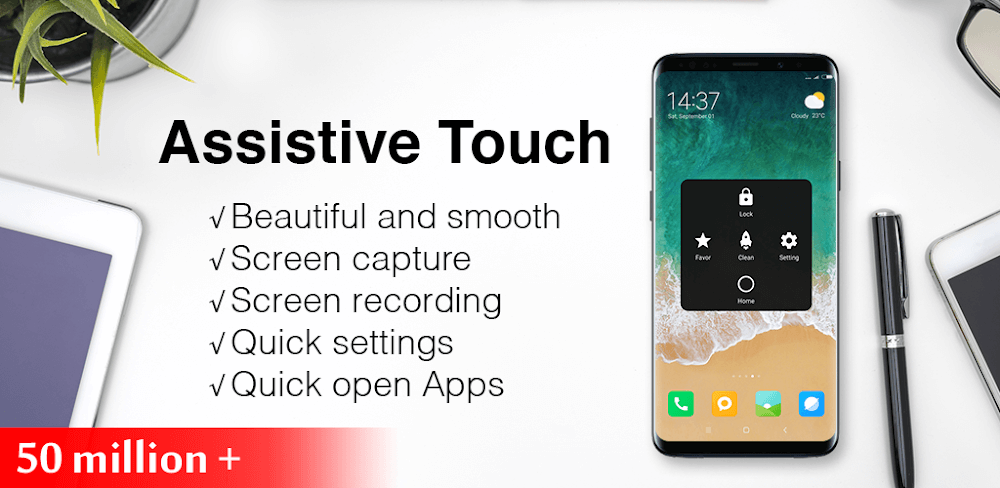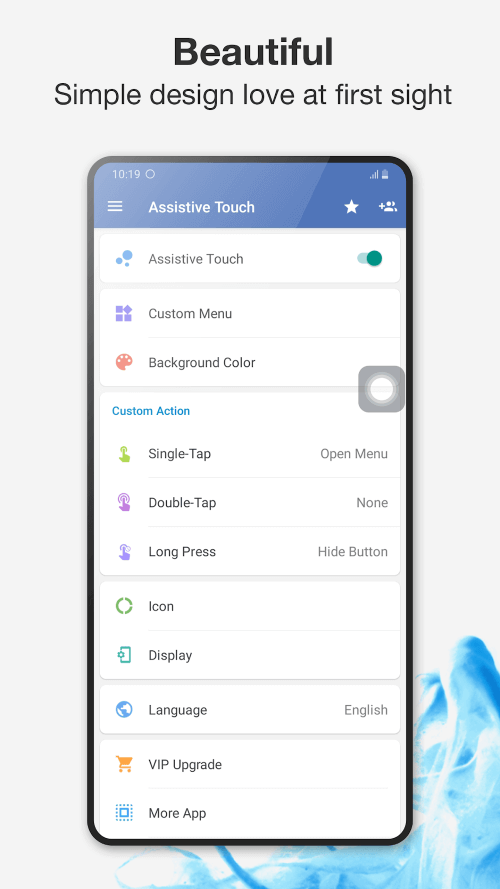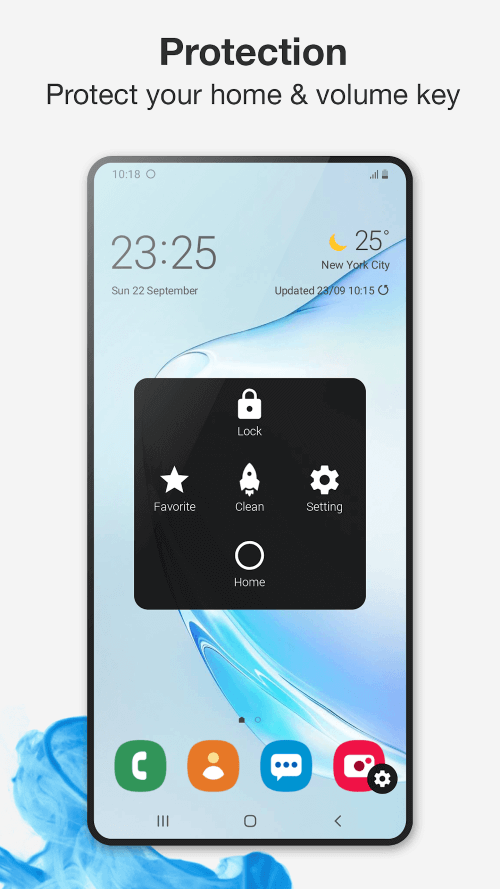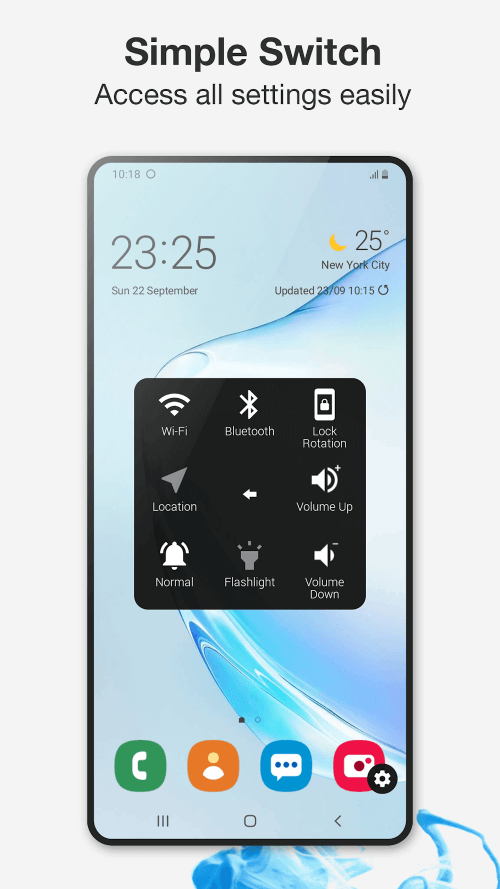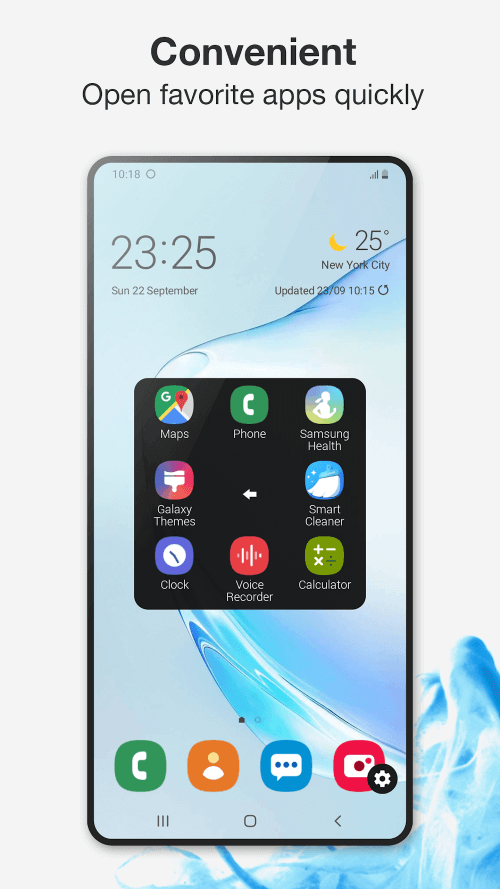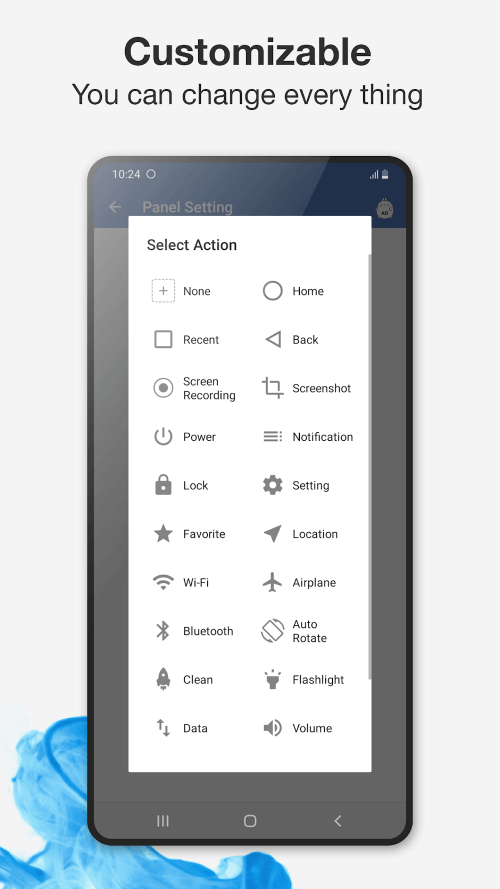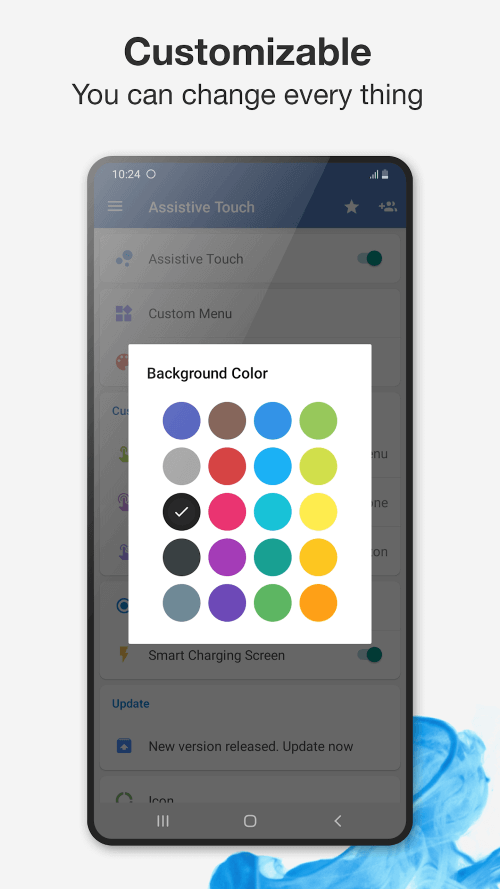Assistive Touch for Android has become an indispensable tool for many people to help them in many different aspects. The necessary features can be attached to many necessary features to activate more quickly. Over time, the buttons that take on the task will not need to work and still maintain a stable state.
FLOATING VIRTUAL BUTTON
Everyone can completely access the same features as on the IOS platform. Everything you need is gathered in a single area and always floats on your screen over time.
- Quick Access: Accessing a variety of apps, settings, and functions can be done easily. In particular, everyone can completely access everything through the corresponding customization process.
- Gesture Support: This use is often well associated with many different operations that you cannot ignore. Over time, you may discover completely new gestures that can be assigned to different features.
- Customizable Shortcuts: All features are gathered in a single button that you cannot ignore. So you can add frequently used features and quickly associate them with multiple gestures to open them faster.
ENHANCED DEVICE CONTROL
Using an assistive touch completely meets the needs of each user. This is completely understandable because anyone does not want to use the device’s hardware too much to avoid damaging them.
- Accessibility Features: Necessary features can be associated with different gestures that you cannot ignore. So you can adjust it as freely as possible and gradually ignore the use of buttons.
- Virtual Home Button: Opening the screen is no longer a feature that is too difficult to perform through interacting with the screen. This way, you can minimize the need to press a button for too long and make the most of your device’s potential.
- Screen Capture: Some of the most commonly used elements by users, such as screen capture, can be activated much faster. Instead of having to press multiple buttons at the same time, let assistive touch take care of the rest.
